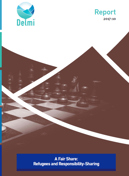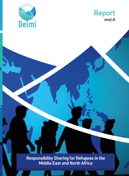Against the background of the recent migratory crisis in Europe, this Delmi report aims at examining and taking stock of the Common European Asylum System (CEAS). It asks what has been achieved and what has failed, focusing on two of the most pressing challenges: (1) the unequal distribution of asylum seekers across the EU Member States and the search for a more equitable sharing of responsibilities; and (2) the wide variations regarding Member States’ decision-making practices on asylum applications and the need to achieve more harmonised recognition rates.
Conclusions and policy recommendations
- The results show that some Member States have overperformed with regard to the number of asylum seekers they admitted, due to their geographical location within the EU or other factors, whereas others have remained far below a fair share.
- The results show that while an overall trend towards higher protection rates can be identified, not least due to the increased numbers of asylum seekers from war-ridden countries such as Syria, Member States have made very little progress regarding more harmonised decisions.
- While Sweden has by far exceeded the quantitative responsibility for asylum seekers that it would have in relation to its population size and its economic power during the period 2008-2015, it suddenly underperformed in 2016 as the number of incoming asylum seekers plunged following the introduction of a number of restrictive measures.
- Sweden’s practices have often been roughly in line with the EU average, meaning that they did not massively deviate from the mainstream EU approach to specific countries of origin. However, regarding two very significant countries of origin, the authors found interesting variations. Concerning Iraqi nationals, Sweden has been more restrictive than the rest of the EU over the entire period of analysis from 2008 to 2016. While it had a comparatively generous approach towards asylum seekers from Afghanistan, it was significantly stricter than the EU mainstream in 2015 and 2016.
- On asylum decision-making, the authors propose an enhanced role for a future EU asylum agency, which would include a “fire brigade” function to identify, analyse and mitigate situations in which Member States’ asylum recognition rates for applicants from specific countries of origin differ too strongly.
- The study also proposes “joint processing” exercises, where officials from several Member States examine and decide asylum applications lodged by nationals of a specific country together.
- The authors suggest that a new quota-based distribution system that replaces the current Dublin criteria in the long run is the best and most consistent way forward.
Om författarna
The report, Reforming the Common European Asylum System (2017:9), is written by Bernd Parusel, Migration and Asylum Expert at the Swedish Migration Bureau, and Jan Schneider, Head of the Research Unit at the Expert Council of German Foundations on Integration and Migration.
Picture by Alexey Mikhailov from Pixabay.


